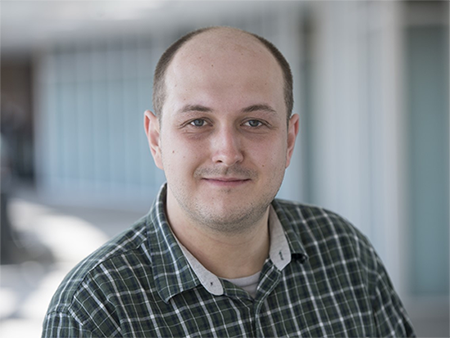Media contact: Yvonne Taunton
University of Alabama at Birmingham Thomas Gilray, Ph.D.
Thomas Gilray, Ph.D.
Photography: Steve Wood professor Thomas Gilray, Ph.D., has received a Defense Advanced Research Project grant (DARPA) as part of the verified security and performance enhancement of large legacy software (VSPELLS) program from Galois Inc. to help humans easily navigate and understand large, complex software systems.
Gilray, an assistant professor in the Department of Computer Science at the UAB College of Arts and Sciences, will explore using artificial intelligence-based programming languages for reasoning about code at scale in the cloud and on supercomputers.
“We will collaborate with other universities to develop methods, tools and techniques for remodeling legacy software with new, formally verified components written in domain-specific languages,” Gilray said.
Gilray has designed AI-based languages that will uniquely enable his lab to turn high-level and understandable specifications into massively parallel simulations of code such as Amazon EC2, Google Cloud or Microsoft Azure.
“Our team’s focus will be applying our lab’s novel approach to analysis of software on interactive modeling and component identification for legacy code, permitting humans to more easily navigate and understand large complex software systems,” Gilray said.
Gilray’s team will collaborate with researchers from other universities, along with those at Galois, to conduct basic research into automatic systems for strengthening large legacy codebases.
The VSPELLS Project seeks to bring high levels of assurance to the process of reengineering legacy C/C ++ systems. Its goal is to automate the process of understanding legacy code and retrofitting it with new, formally verified components.
“Through this project, we are developing the capacity to use understandable specifications and queries to drive interactive state-of-the-art models of very large codebases,” Gilray said.
